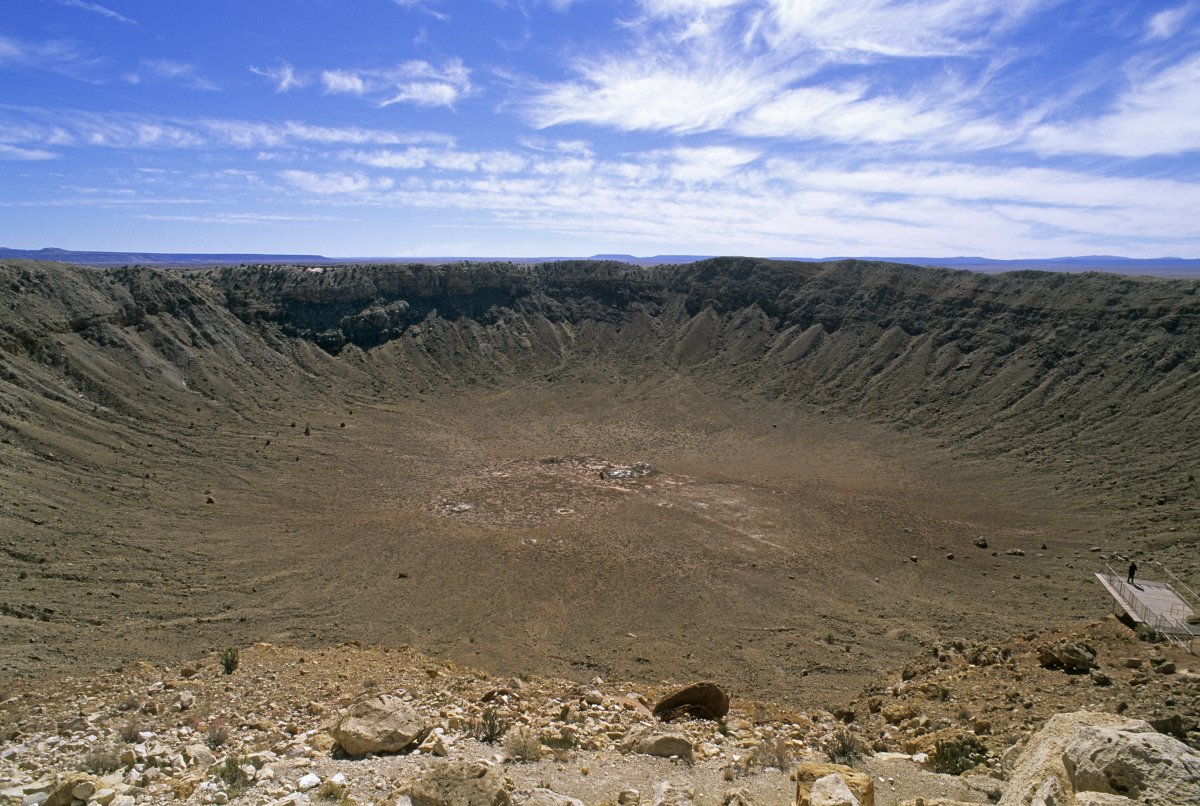An asteroid larger than a football field zoomed past the Earth at a distance closer than our moon in early June, and astronomers didn’t know about it until it had already passed.

The asteroid is the largest to pass near the planet in nine years, and it would have been big and fast enough to deliver a nuclear-sized explosion if it had hit Earth, according to Purdue University’s impact predictor.
But it didn’t hit Earth so … this is fine?
NASA data shows the asteroid, known as 2020LD, was discovered on June 7 — two days after it whizzed between the Earth and the moon. The asteroid was between 89 and 200 metres wide and passed within 306,000 kilometres of the planet, according to NASA tracking data. That’s about 80 per cent of the distance to the moon.
The asteroid was first detected by a telescope in Hawaii, Forbes reports. The Asteroid Terrestrial-impact Last Alert System (ATLAS) spotted the asteroid on June 7 and followed its trajectory to figure out where it’s going and where it came from. The analysis revealed that ATLAS — a NASA-funded project that specifically looks out for planet- or city-killing asteroids — completely missed this one when it passed by Earth on June 5.
Oops?
Dozens of asteroids pass harmlessly between the Earth and the moon every year. ATLAS and other skywatchers typically identify, catalog and project the paths of these asteroids, although the occasional giant space rock does slip through.
The last big scare occurred in 2019 when a 100 metre-wide asteroid seemingly came out of nowhere and passed within 73,000 kilometres of Earth. The potential “city killer,” known as 2019 OK, came from the direction of the sun and was not spotted until the last minute.
Earthlings don’t have to worry about another close encounter with 2020 LD for the next little while, as it will not come any closer than its recent near-miss over the next six decades.
The asteroid might have been big enough to leave a kilometre-wide crater similar to the one in Flagstaff, Az., EarthSky reports. However, size is just one factor in determining the potential impact of an asteroid. Its speed and angle when it hits the Earth also affect its destructive power.
The meteor that created a light show over Chelaybinsk, Russia, was 20 metres across, while the one thought to have wiped out the dinosaurs was 16 kilometres wide.
There are no 16 kilometre-wide asteroids currently on NASA’s near-approach list.
At least, none that they can see right now.





Comments